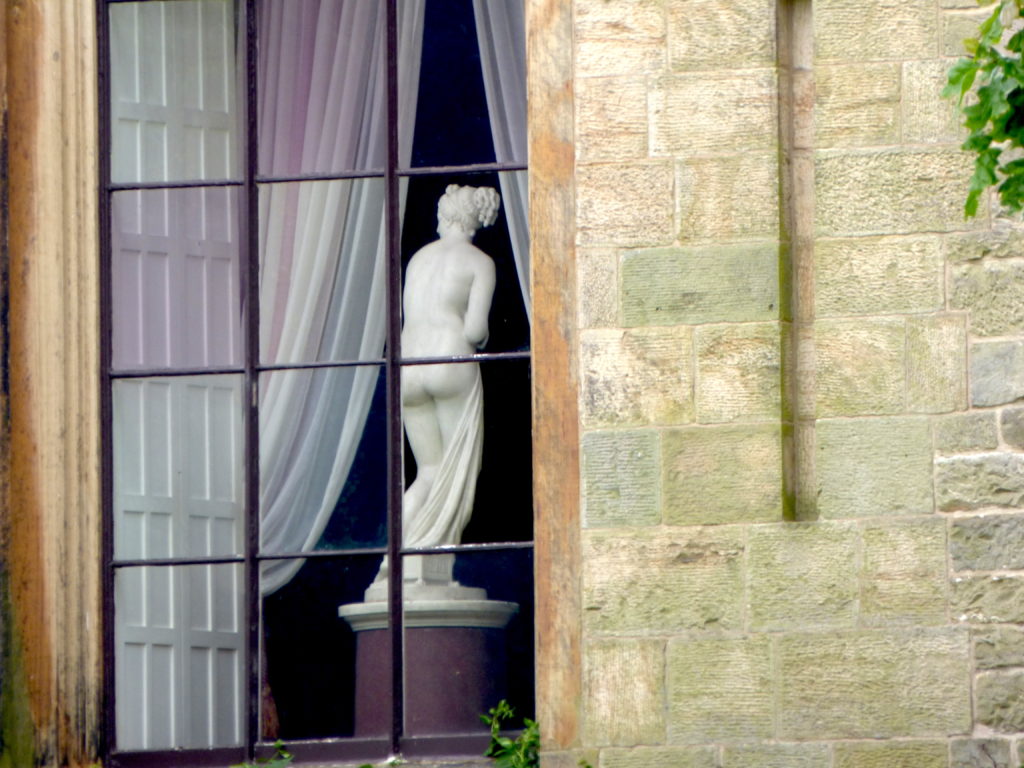Towneley Hall
It’s not every day you get to say, “Go past the pangolin and turn right at the mummy” but today was one of those days. It was raining again, so we decided to stay in Burnley, and take a look the the civic museum Towneley Hall.
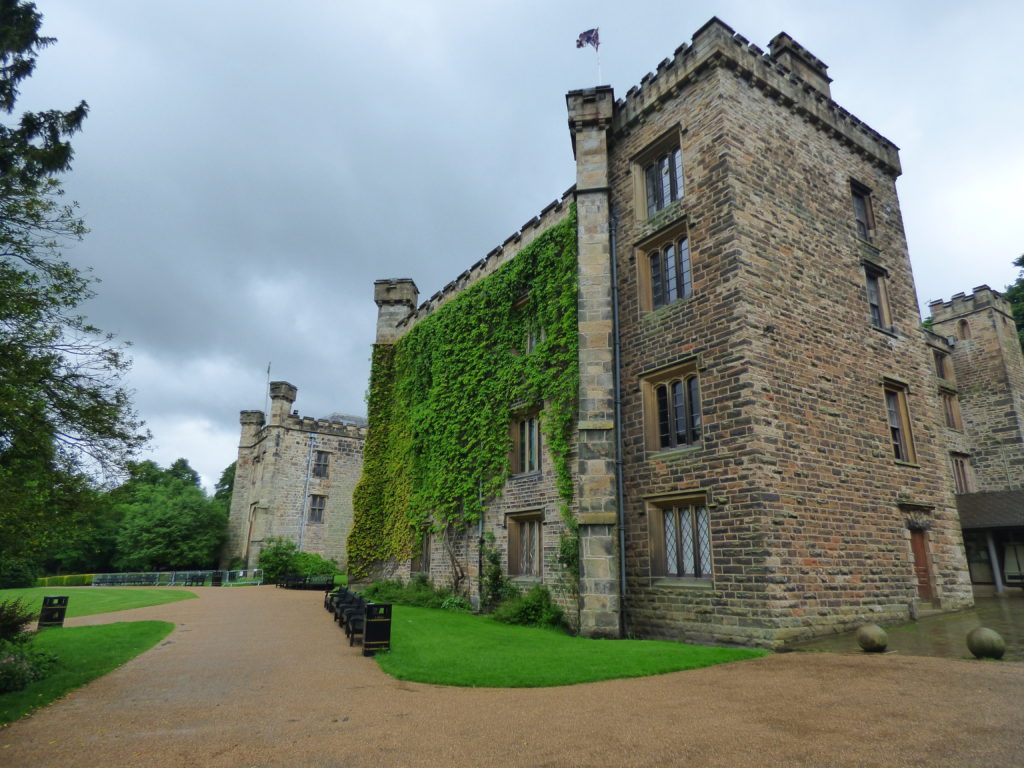
The Towneley family lived there for five hundred years before selling the place to Burnley Council in 1901, though the building changed quite a bit over the centuries. It was sold unfurnished apart from one table that was too big to move, and that had been relegated to the servants’ quarters at some point as being unfashionably Jacobean.

That deep scratch from side to side is because the servants used it for playing shuffleboard. It was made in 1613 to celebrate a wedding, and is still used when someone rents the hall for a big wedding reception.
The hall that it is now in got a big makeover in the Regency period.
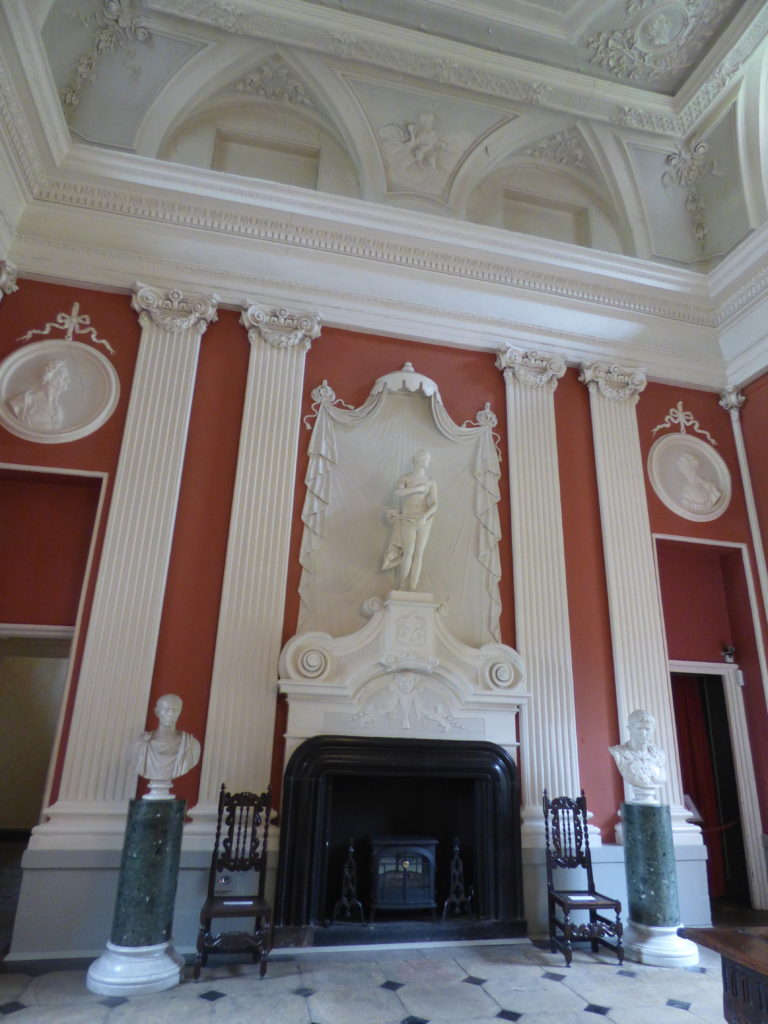
However, the Tudor long gallery is still intact.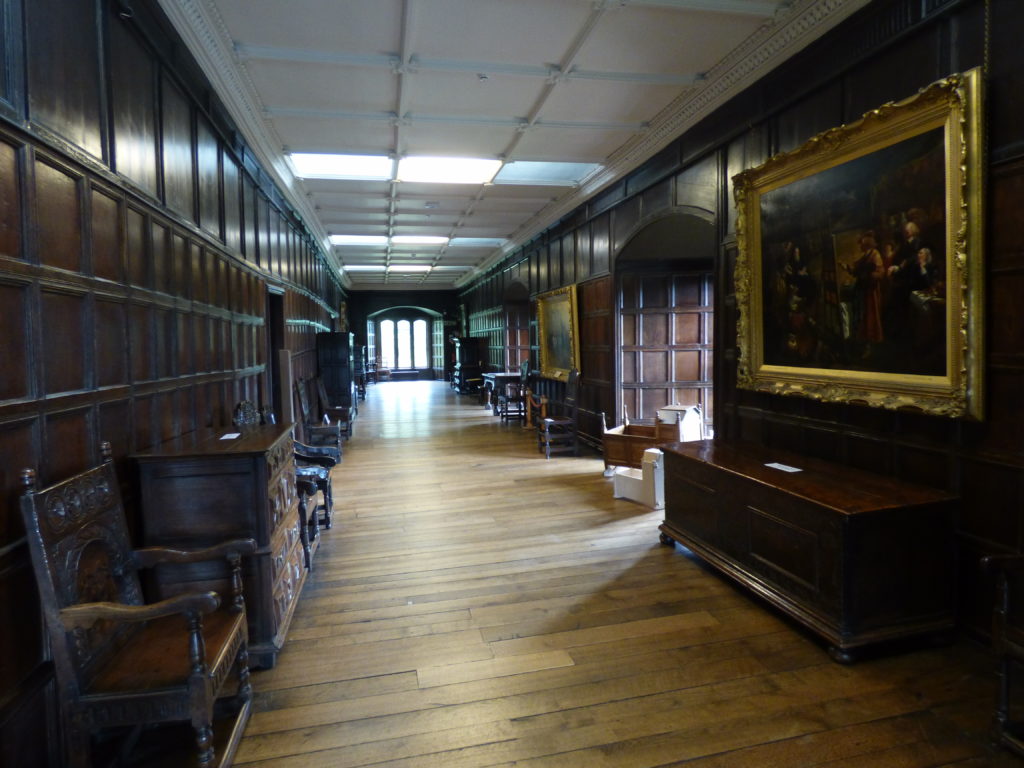
Being as the building came empty, Burnley had filled it up with whatever people gave them that might be interesting. Hence the pangolin…

… the albino goshawk…

… the ivory carvings…
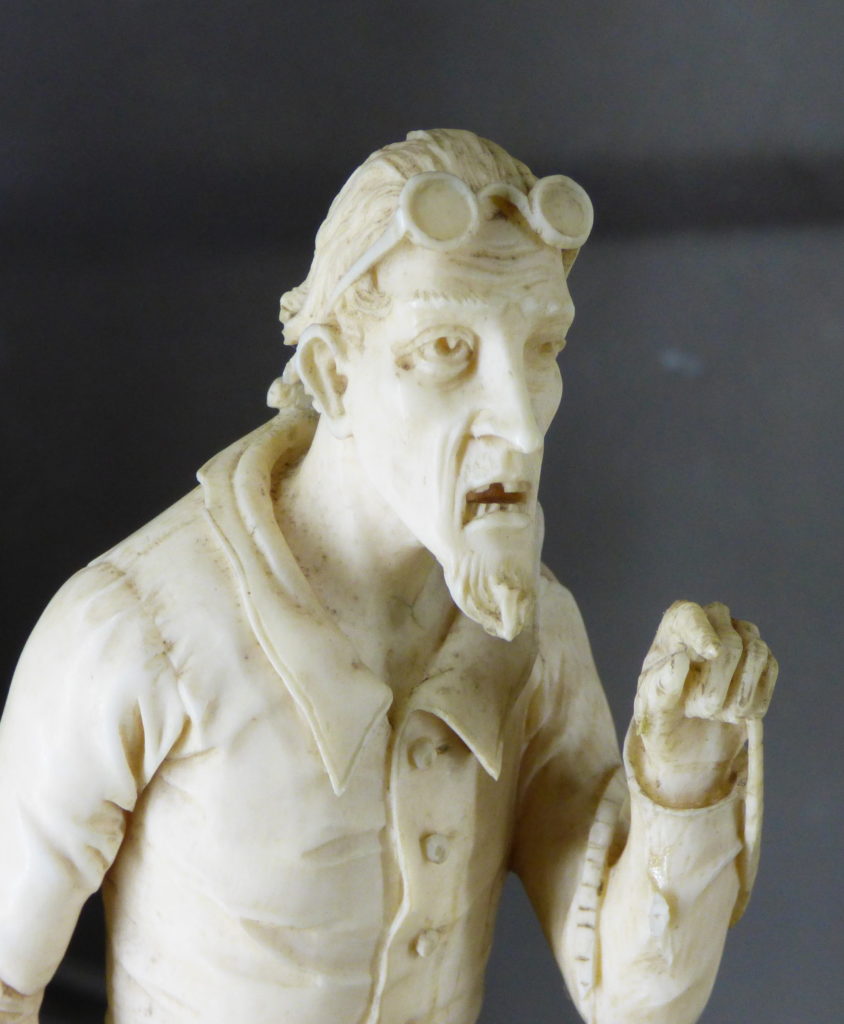
… devoted to bad dental care…
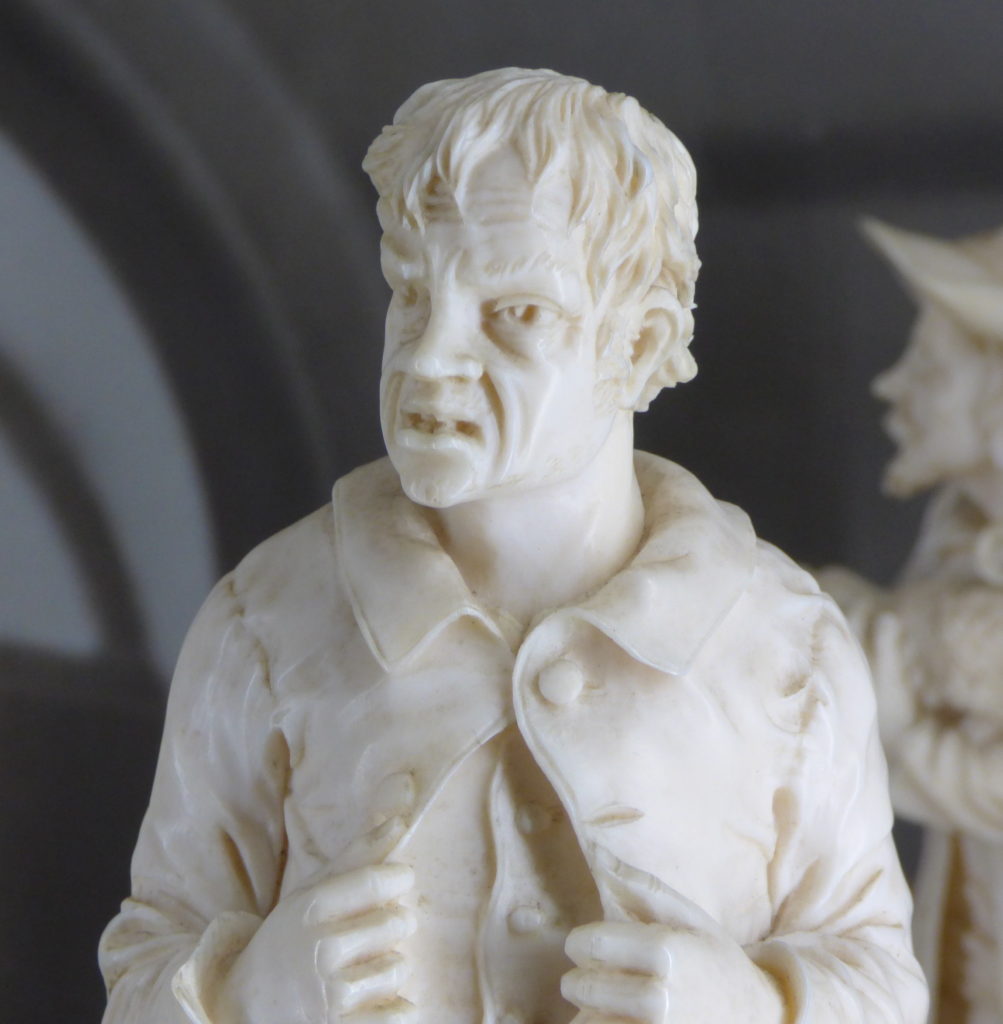
… and impending wardrobe malfunctions…
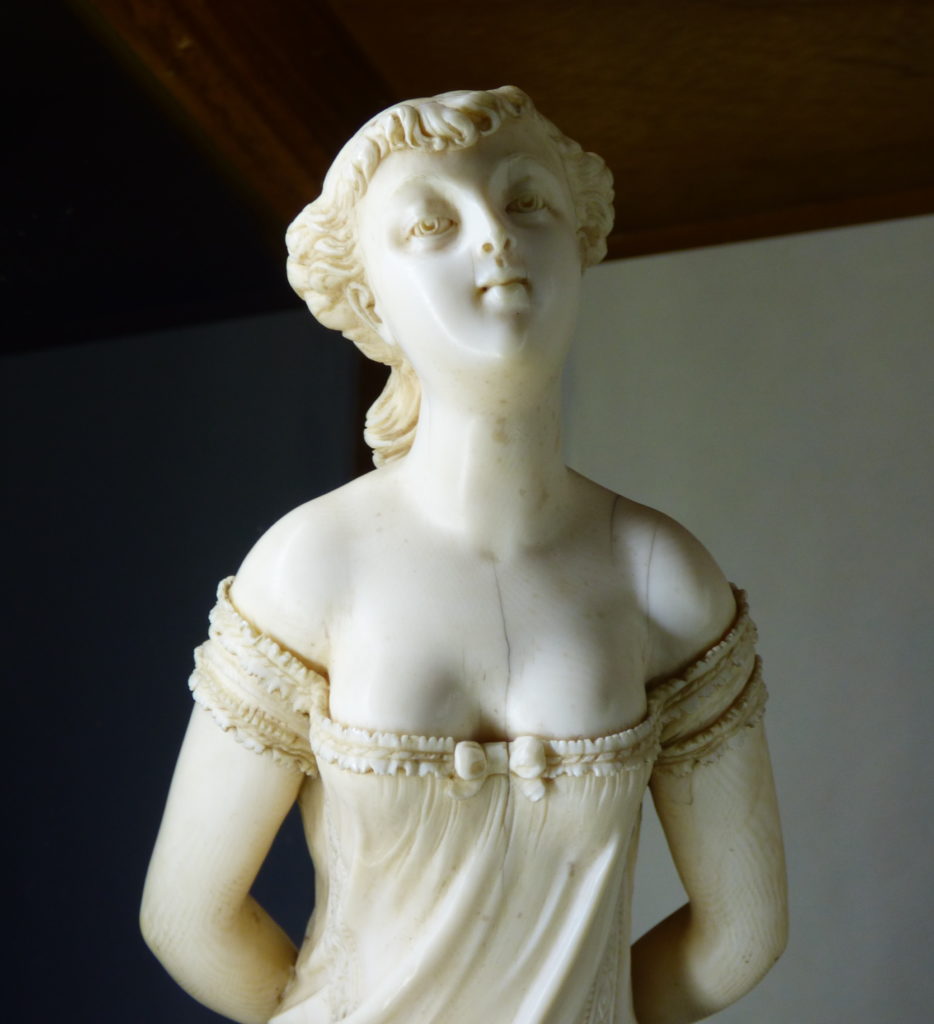
… and of course the mummy…
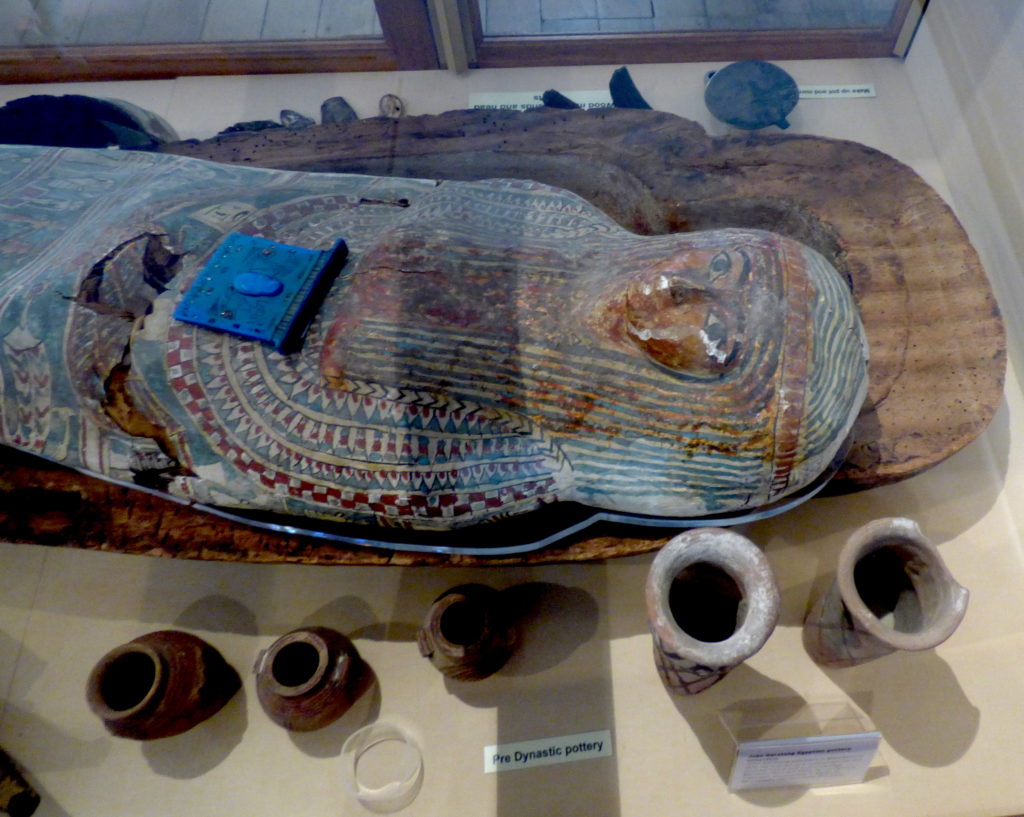
… who was apparently eighteen year old and had a wooden leg when he died 2,500 years ago. What a tough life. You lose a leg, die while still a teenager, and then you have to spend your afterlife in Burnley.
Of course this was all in one room. The other rooms have equally strange and wonderful exhibits. There’s a sausage machine in the kitchen…
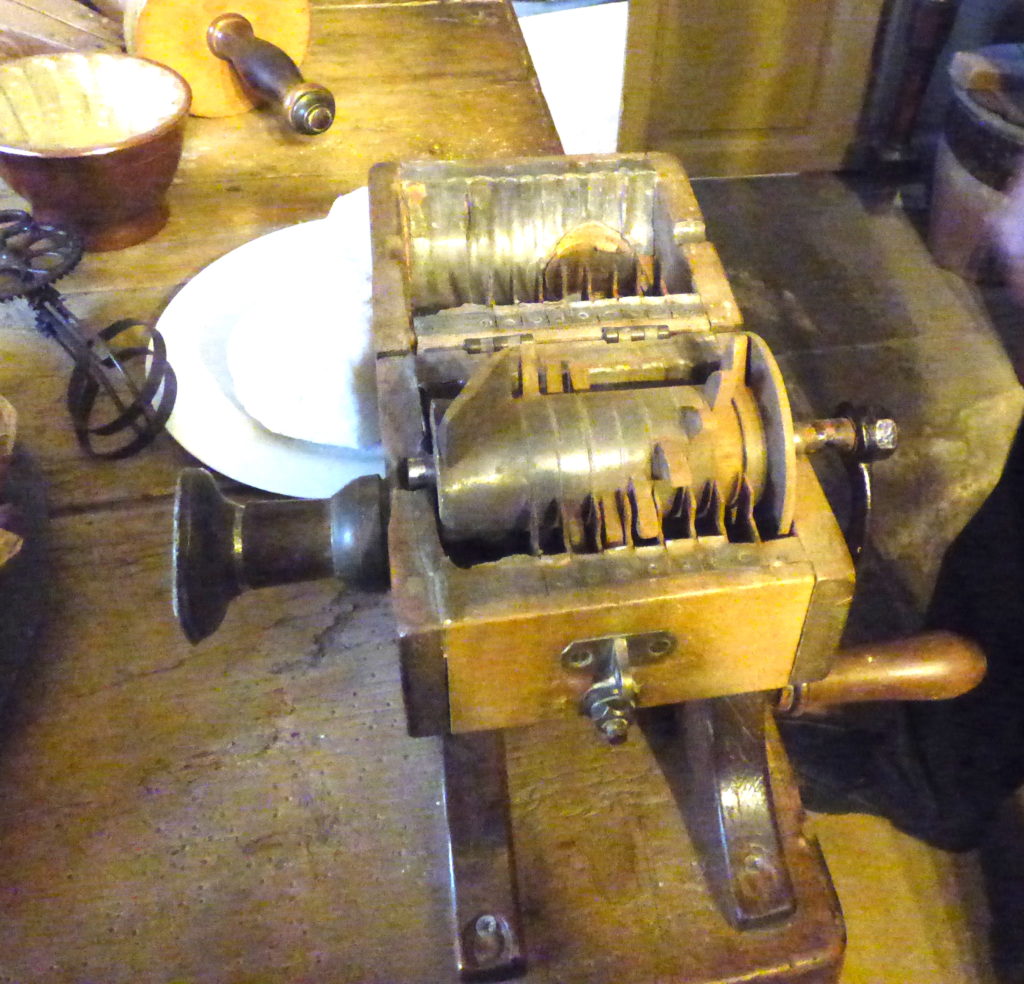
… a haunted cradle that rocks itself (when you kick it) in one of the bedrooms…
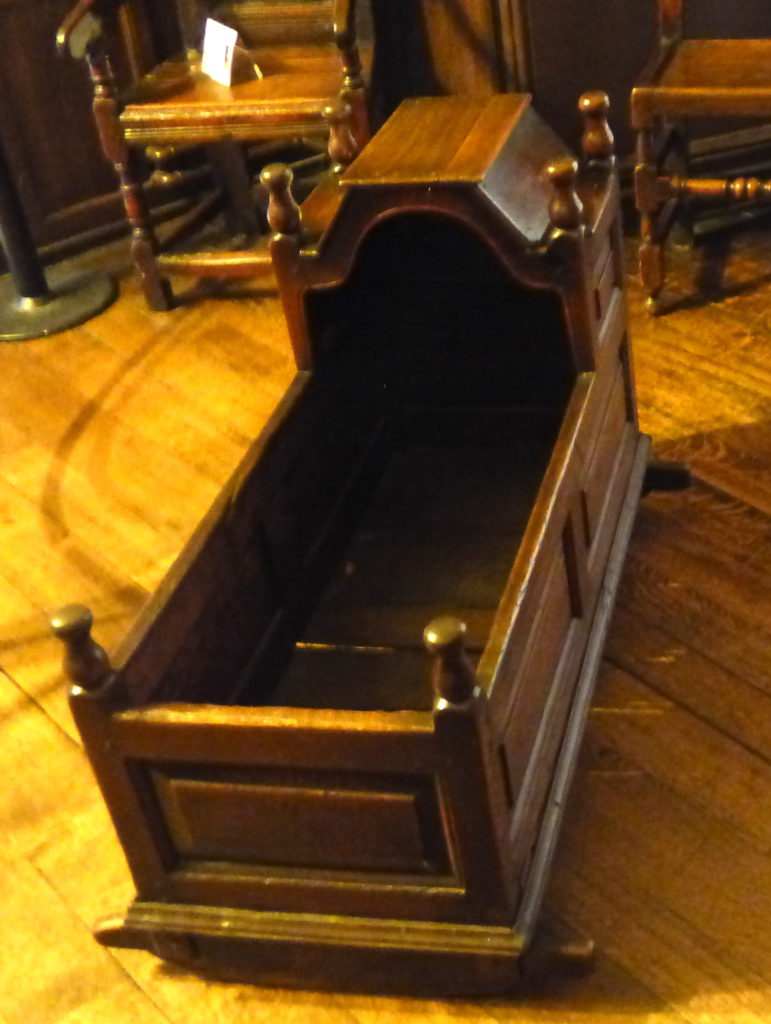
… a priest’s hole under the housekeeper’s bed (at least, she said it was for priests)…
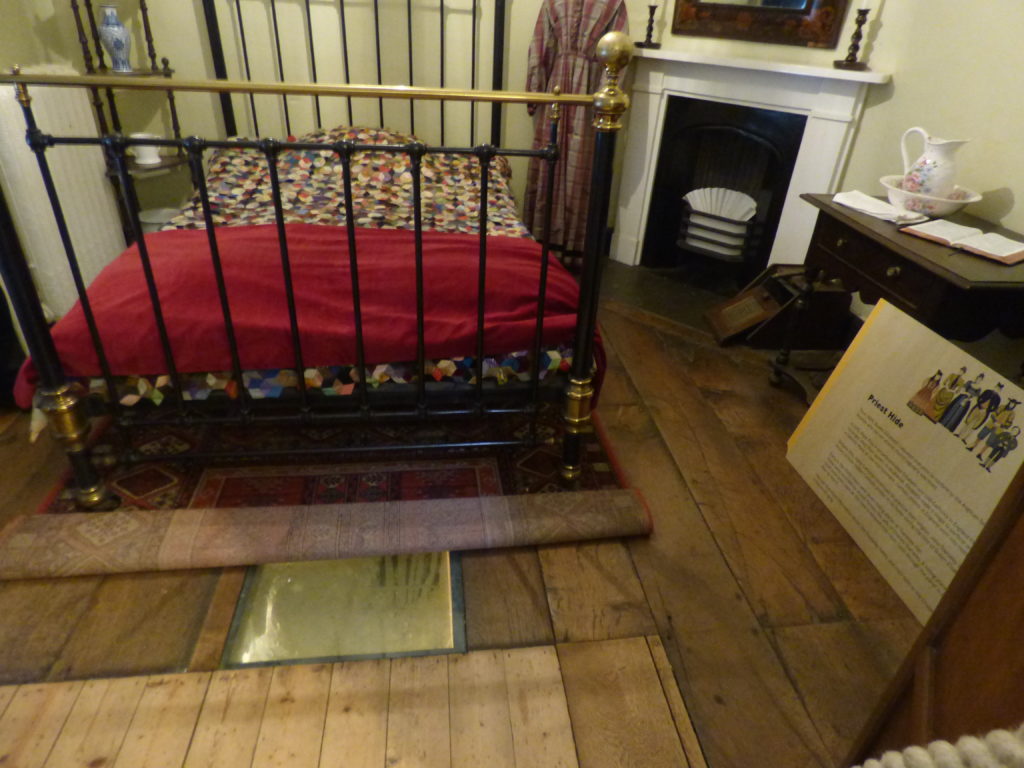
… and a replica of a preserved head in a hidden compartment in the chapel.
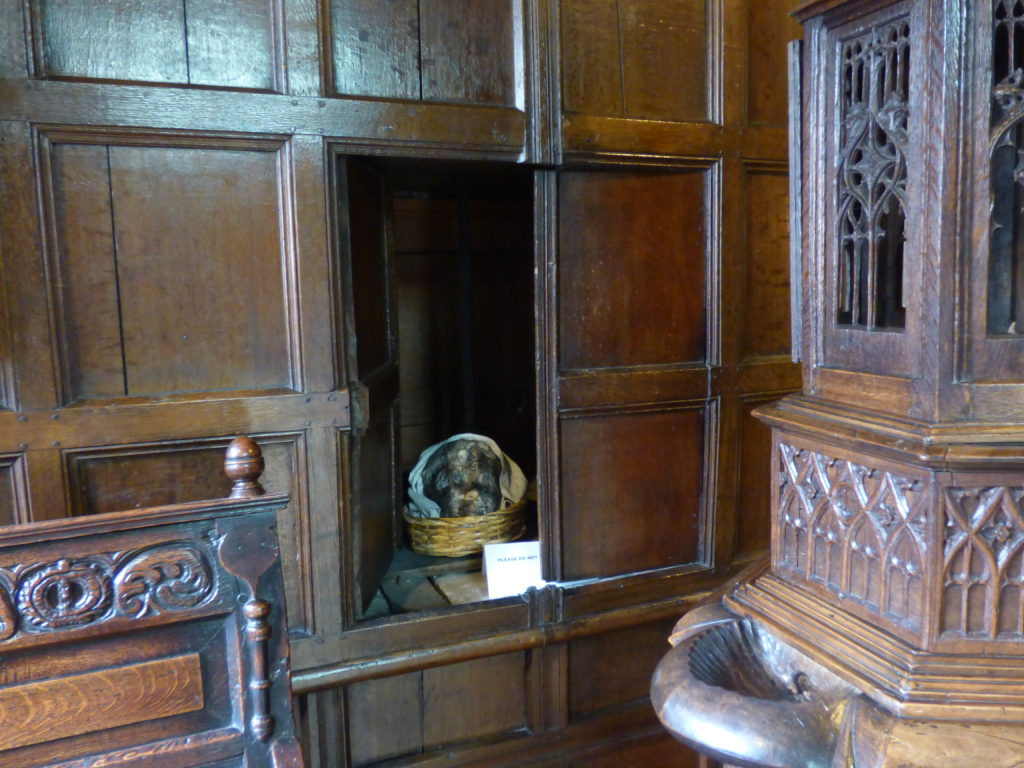
The original head belonged by Francis Towneley who picked the wrong side in the 1745 uprising (Bonnie Prince Charlie and all that) and was hung, drawn, quartered, and beheaded by George II. (Not personally, he had people to do that sort of thing.) The head was dipped in pitch and stuck on a spike. The family managed to recover it twenty years later. They stuck it a hidey hole in the chapel, and forgot about it for two centuries until they installed central heating and the chapel began to smell of pitch. (I hope George R R Martin is taking notes.) The head was recovered and used as a conversation piece at dinner parties (after the food, thankfully). It spent some time in a bank before being transferred to a vault in the family’s local church after World War II. Not being ones to leave things well alone the Towneley family opened the vault in 1978 to see how Uncle Frank was getting along, and discovered he had been joined by a second skull. Apparently his afterlife is going better than that mummy’s.
Then there was Robert Towneley (1629-1707), the first weatherman. He made daily recording of rainfall, and measured the difference in barometric pressure at different altitudes by climbing Pendle Hill with one barometer while sending his servant down a coal mine with another. You will note that the toff was enjoying the fresh country air while sending the working man deep underground, but this is the way it is around here. Boyle did not think he was inventing Boyle’s Law, he thought he was proving Towneley’s Hypothesis.
Some of the collection is magnificent, though and worthy of a place in any museum in the world. They have a set of priest’s vestments from the early 15th century that have just come back from a loan to the Victoria and Albert Museum.
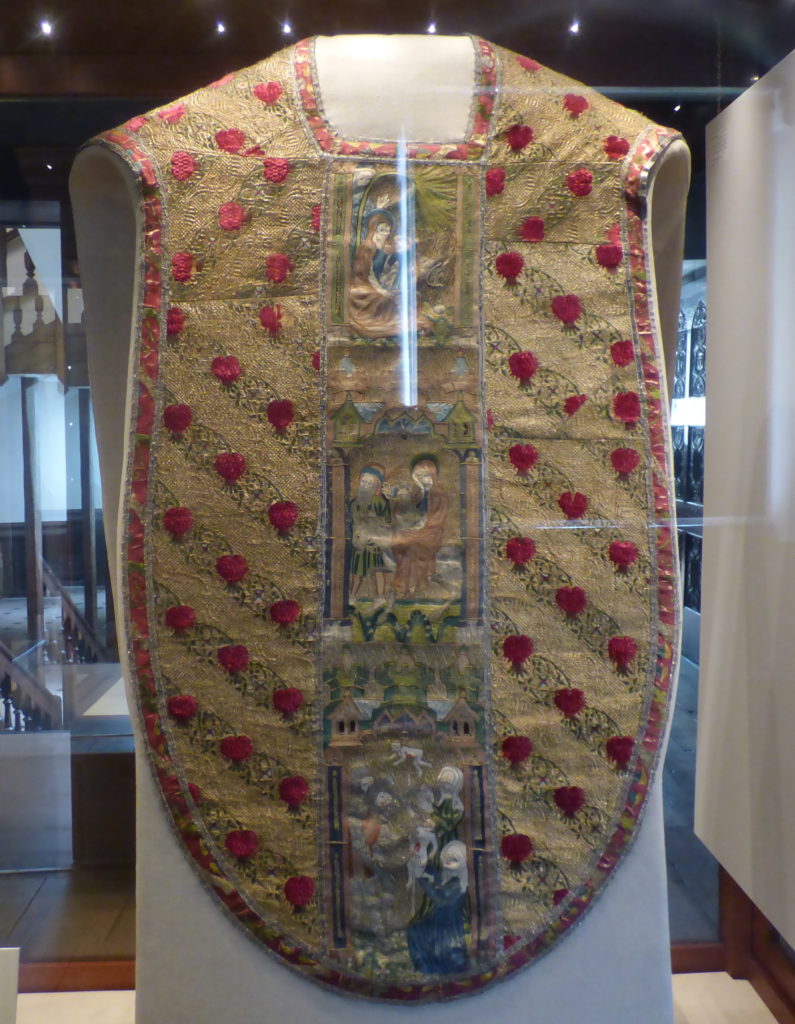
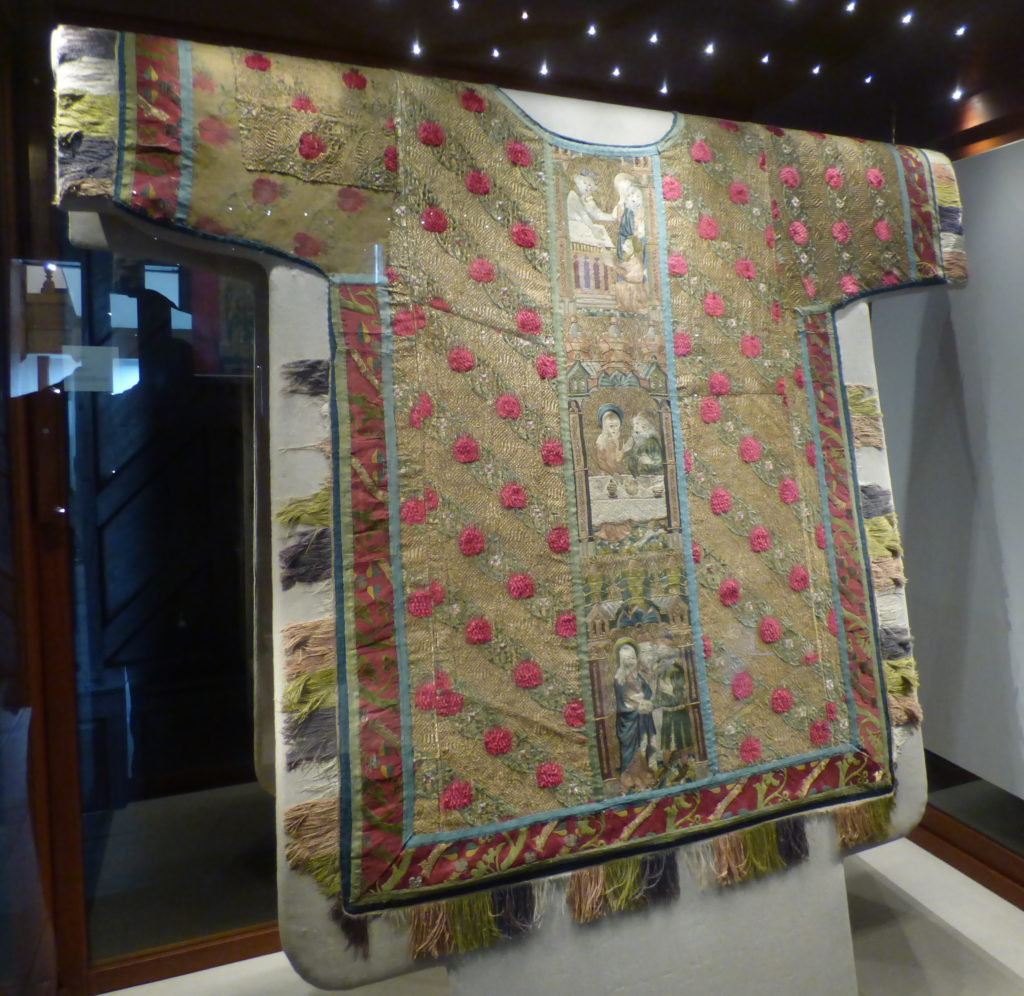

Most English church property of this quality was destroyed either by Henry VIII dissolving the monasteries or by the puritans in the Civil War, but these were preserved for generations by the Towneleys who were and remain Catholics in spite of centuries of discrimination, taxation, imprisonment, and having to pray on their knees.
The the Royal Lancastrian pottery from Pilkington’s gets a room of its own.
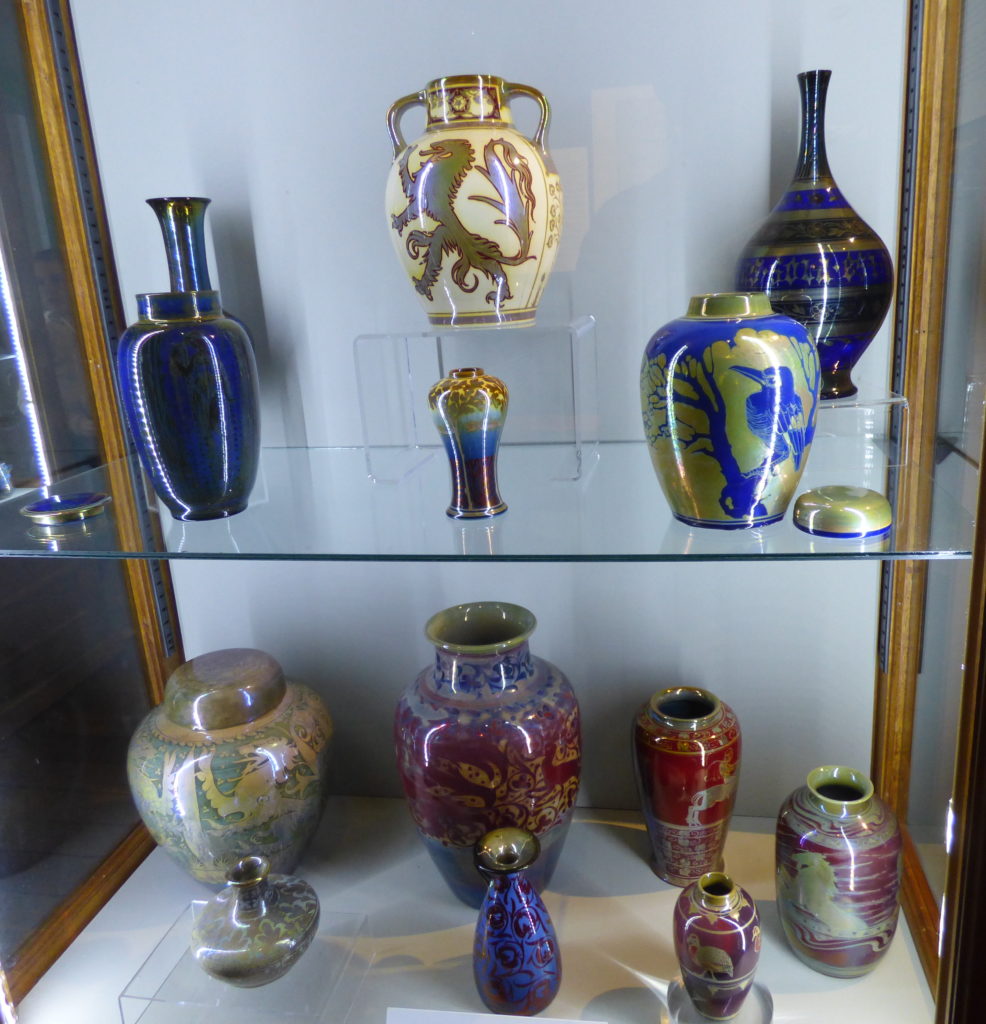

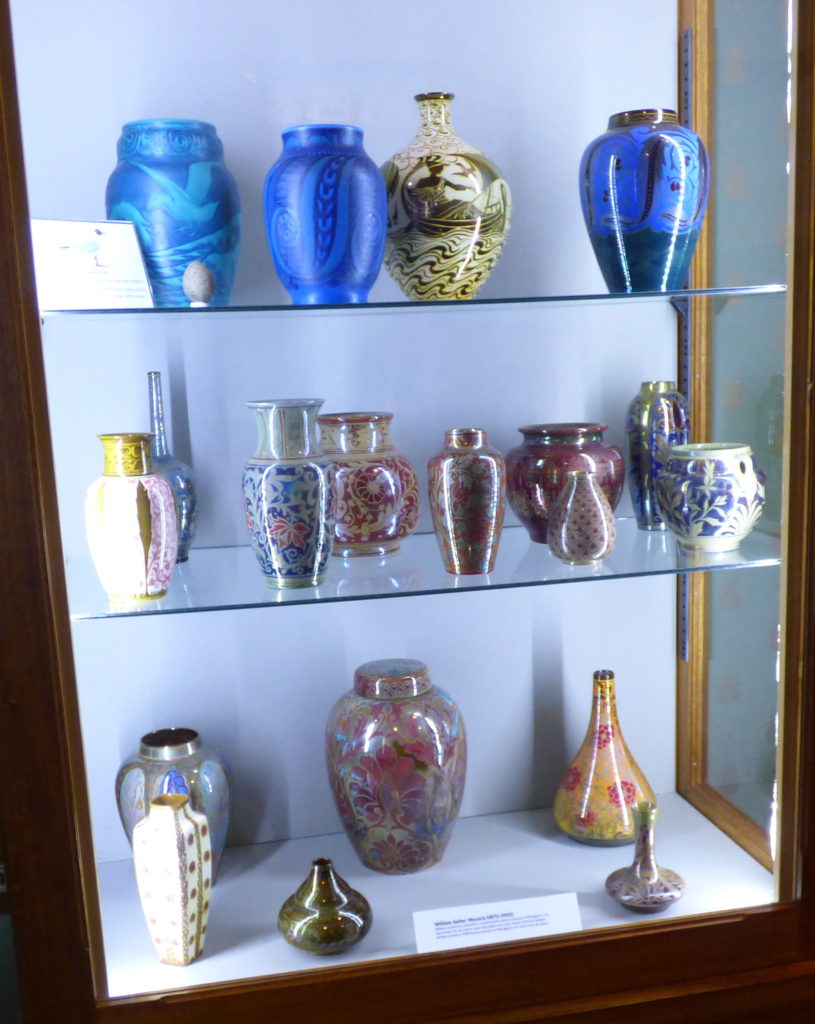
The different artists are identified so you can compare the different design styles.
The art gallery had mostly Victorian paintings. There are some (yawn) pre-Raphaelites and Orientalists. I liked The Gods and Their Makers,by Edwin Long, in which among other things a cat is made to pose for a statue of a cat.
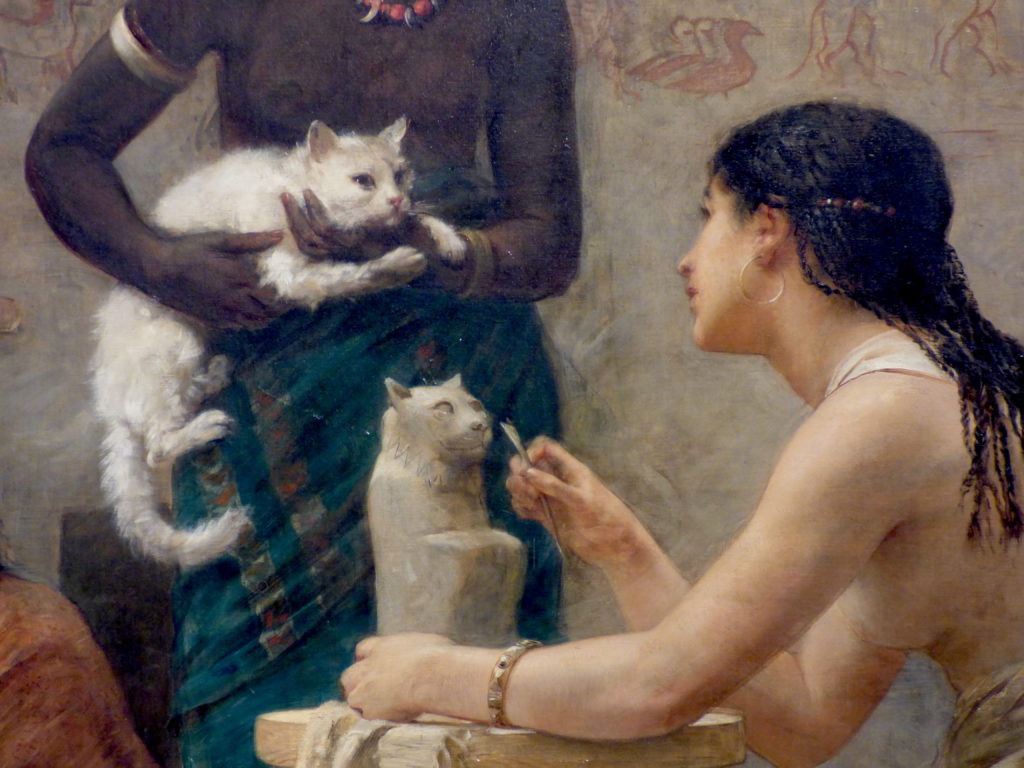
The other things include several bare breasted but nipple deficient Egyptian women. This is of course historically accurate. Nipples were invented by the ancient Greeks and did not make it to Egypt until the Roman period.
I wonder if Long got a cat to pose for the cat that is posing for the statue.
Pride of place in the gallery goes to Joseph “Frozen Mutton” Farquharson, a Scottish painter best known for his depictions of sheep in the snow.
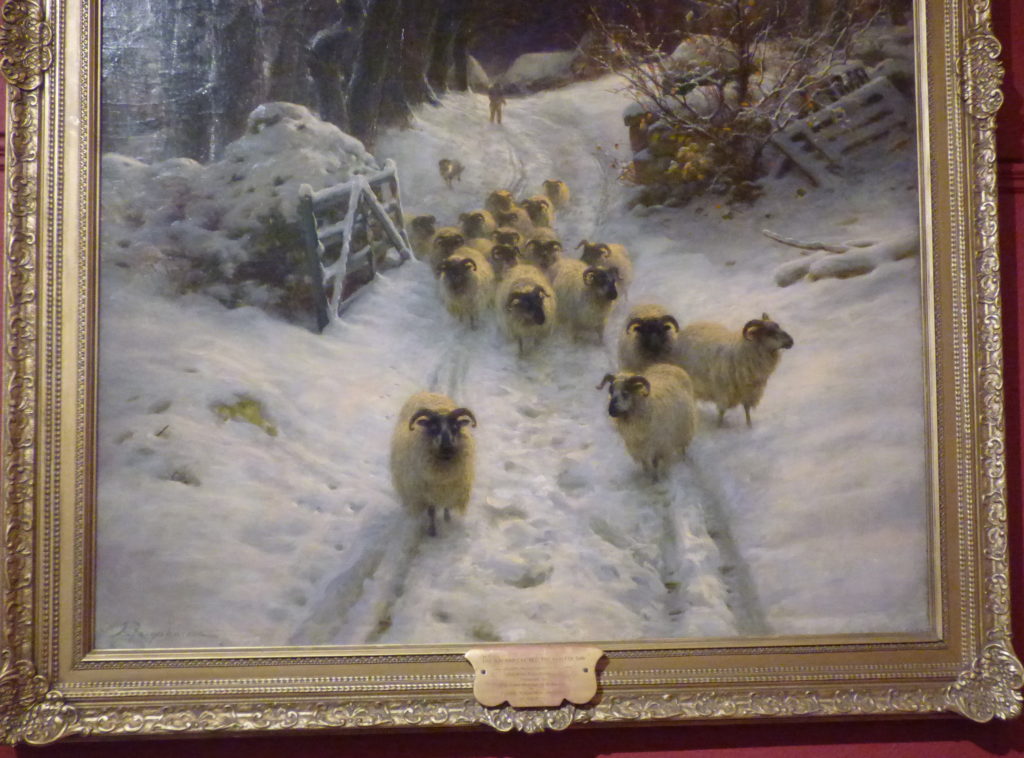
He had a mobile hut for painting in, with a stove in it to stop his oil paints from congealing in the cold. You can just imagine him in the paint shop. “Another five gallons of Flake White, Mr. Farquharson? Here you are… and a tube of Carbon Black for the faces?”
There’s a ghost. Of course there’s a bloody ghost, the White Lady, a servant girl who drowned herself in the lake when her fiancé was trampled to death by a horse. You can still see her in the lake every time the moonlight catches the statue of Aphrodite in the window and reflects in the water.
